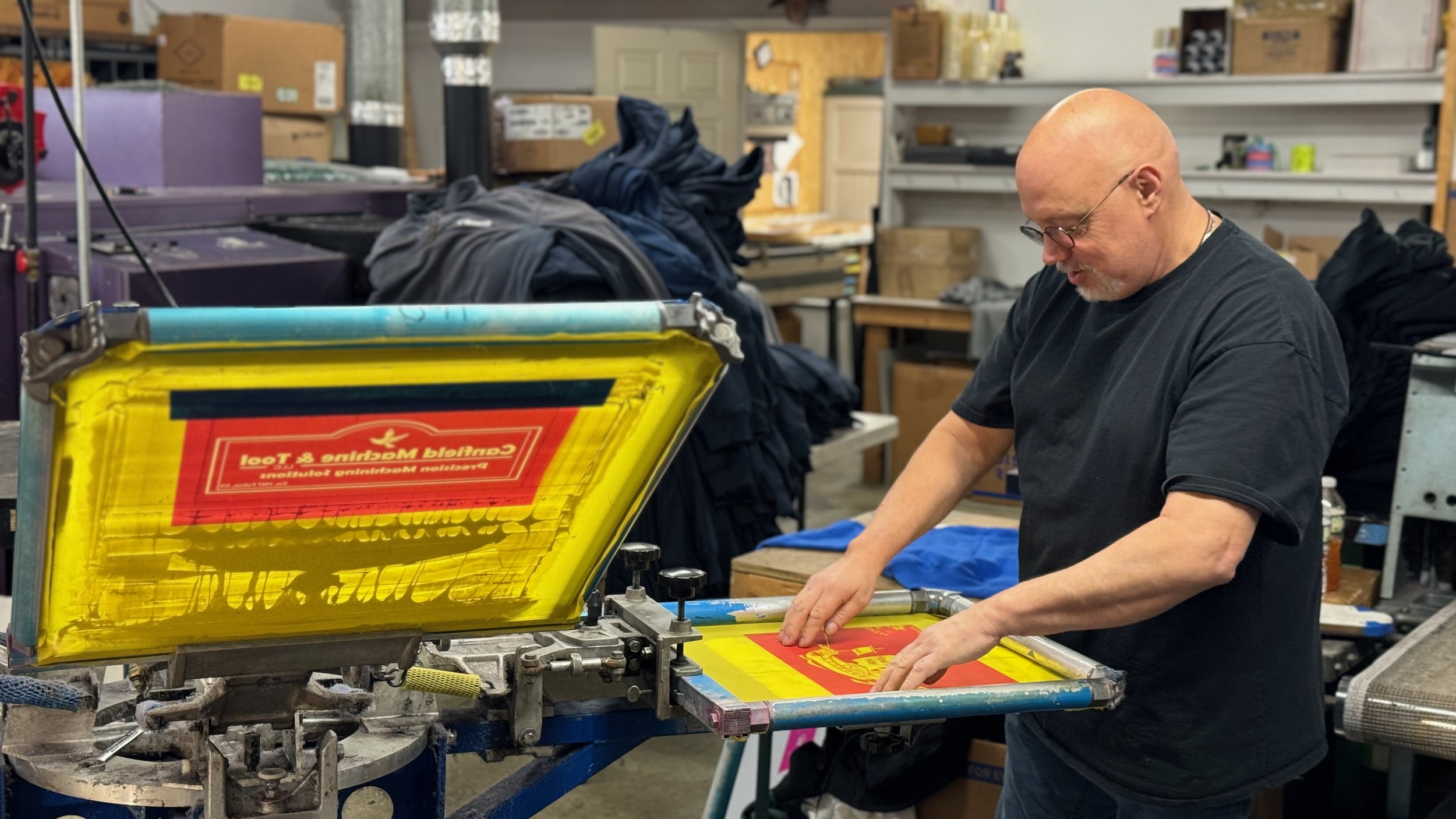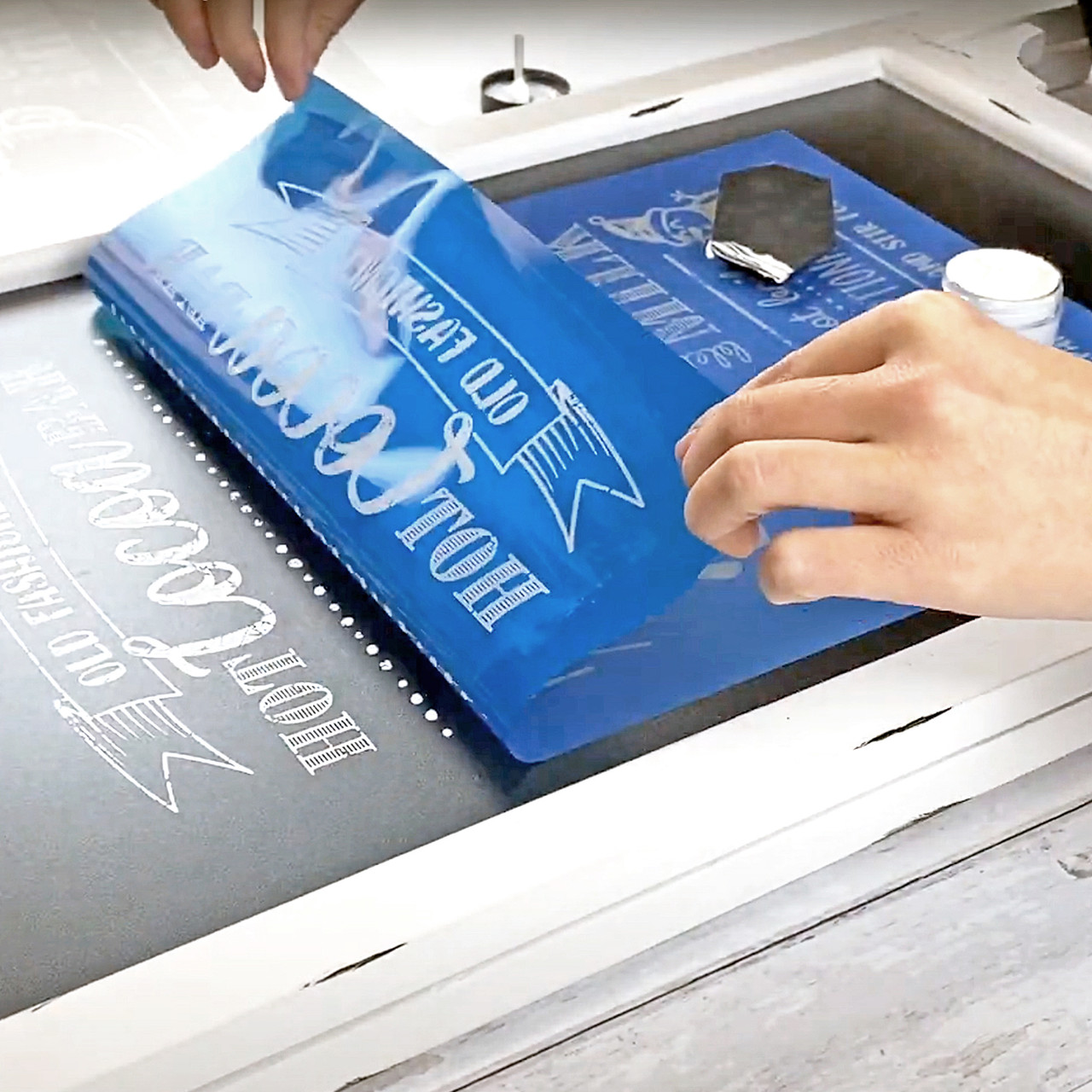High-Volume T-Shirt Printing for Schools and Organizations
High-Volume T-Shirt Printing for Schools and Organizations
Blog Article
Screen Printing Uncovered: Every Little Thing You Need to Know About Tee Shirt and Garment Printing Methods
Screen printing is a fascinating approach that combines art with strategy, using limitless possibilities for creativity. Ready to discover the crucial elements that make display printing an art type?
The Basics of Display Printing: Exactly How It Works
When you plunge right into display printing, you'll find it's both an art and a science. At its core, screen printing involves creating a pattern, or screen, that enables ink to pass with only in certain locations.
Placement the screen over the material, after that use a squeegee to push ink via the screen onto the garment. Each step is necessary, and understanding them will certainly raise your screen printing abilities, changing simple garments right into special, expressive pieces.
Types of Display Printing Strategies
Once you grasp the basics of display printing, it's time to discover the various strategies that can boost your layouts. One preferred approach is traditional display printing, where ink is pressed through a stenciled screen.
Another alternative is plastisol printing, understood for its longevity and dazzling shades, making it a favorite for numerous brand names. Experiment with halftone printing to produce slope impacts and intricate layouts.
Necessary Equipment for Display Printing
To accomplish stunning lead to screen printing, having the ideal tools is basic. You'll require a durable display printing frame, which holds the mesh that moves your layout onto the garment. Next, buy top notch squeegees; these are crucial for applying ink evenly throughout the display. You'll also need a great exposure system to develop your screens, as well as a washout booth for cleansing them after usage. A reliable warm resource, like a conveyor dryer or warm press, is essential for curing your prints to ensure longevity. Don't fail to remember a correct workspace, outfitted with tables and storage for your supplies. Safety equipment, such as masks and handwear covers, will maintain you secure from chemicals and inks. With the right devices, you'll be well on your way to producing professional-quality prints.
Choosing the Right Inks and Products
When selecting inks and products for display printing, you require to take right into account the sort of ink that works finest for your job. Think of fabric compatibility to assure your layouts look wonderful and last long. Additionally, discover eco-friendly ink options to make your printing process a lot more lasting.
Kinds of Display Inks
Picking the appropriate screen ink is vital for accomplishing lively, resilient prints that satisfy your job's demands. There are numerous kinds of display inks to check out. Specialty inks, such as glow-in-the-dark or metallic, can include one-of-a-kind impacts to your designs.

Material Compatibility Considerations
Understanding material compatibility is essential for achieving top quality display prints, particularly considering that different products respond distinctly to different inks. When picking inks, take into consideration the fabric kind-- cotton, polyester, or blends. For cotton, water-based inks work well, providing gentleness and breathability. Polyester, on the other hand, typically needs plastisol inks for better adhesion and dynamic shades. You might require to make use of a mix of both types if you're printing on blends. Always evaluate your inks on example textile to ensure they adhere correctly and maintain color honesty. In addition, remember that textile weight and appearance can affect the final result, so picking the appropriate ink and material combo is essential for your job's success.
Eco-Friendly Ink Options
Eco-friendly inks are ending up being a popular option for display printers who intend to lessen their environmental impact while maintaining top quality. When picking inks, think about water-based inks, which are much less unsafe and much easier to clean up contrasted to conventional solvents. These inks bond well with materials, delivering dynamic results without poisonous chemicals. You might also check out eco-solvent inks that utilize fewer unstable natural substances (VOCs), making them a more secure alternative for both your health and the world.
In addition, search for inks made from sustainable resources, such as soy or vegetable-based options. he said By choosing the ideal inks and products, you'll not only create sensational layouts however likewise add to a much more sustainable printing procedure. Make the button, and your prints will certainly show your commitment to the environment!
Preparing Your Layout for Screen Printing

File Layout Requirements
To assure your style looks sharp and vibrant on material, you'll require to pay close attention to file style demands for display printing. Make certain your style has a clear history to prevent unwanted white sides on your prints. Keep color settings in mind; CMYK is conventional for display printing, so transform your RGB develops as necessary.
Color Separation Methods
Color separation is an important action in preparing your layout for display printing, and understanding it can greatly boost your print high quality. You'll need to damage your layout right into specific shades, as each color calls for a separate display during printing. This precision not only guarantees accurate shade representation yet likewise streamlines the printing process.
Resolution and Size
Accomplishing the most effective results in display printing begins with ensuring your design has the ideal resolution and size. Ideally, your art work ought to be at the very least 300 DPI (dots per inch) for sharp, clear prints. Your last product might look less than professional and pixelated. if you utilize lower resolution.
When it comes to size, think about the measurements of your print area. Design your art work to match the final print size, preferably creating it in the actual measurements you'll be publishing. In this manner, you'll avoid any type of unexpected scaling issues.
Always examine your layout in both vector and raster styles. Vector graphics can be scaled without shedding high quality, making them ideal for screen printing. Preparing properly will ensure your layout looks impressive on every garment!
Step-by-Step Display Printing Process
Screen printing is a dynamic process that permits you to produce lively styles on numerous surfaces. To begin, you'll need a screen, emulsion, and your chosen ink. Prepare your screen by cleansing it extensively. Next off, use the solution uniformly and allow it completely dry in a dark area. When completely dry, reveal your screen to light with your style put on it, which will solidify the solution where the light hits, developing a pattern - screen printing kit.
After rinsing the unexposed emulsion, your screen is all set. Set it up on your printing surface area and straighten your garment underneath it. Put ink onto the display and make use of a squeegee to push the ink through the pattern onto the fabric. Raise the screen thoroughly and allow Continued the print completely dry. Treat the ink utilizing warmth to assure toughness. That's it! You've effectively screen published your design.
Tips for Effective Screen Printing Projects
While you're diving right into your screen printing projects, bear in mind that prep work is essential to success. Beginning by gathering all your products-- inks, mops, garments, and screens. A clean work area aids avoid undesirable errors, so neat up prior to you begin.
Following, confirm your artwork is high-resolution and correctly sized for your garment. Examine your screen for proper direct exposure and tidy it thoroughly to stay clear of spots. When mixing your inks, follow the manufacturer's guidelines to achieve the appropriate uniformity.
Throughout printing, apply also pressure with your squeegee for constant outcomes. Do not hurry; take your time to verify each print fulfills your criteria. After printing, allow your garments completely dry entirely prior to handling or packaging them.
Finally, always maintain a sample of your benefit future recommendation. In this manner, you can examine your development and enhance your techniques in time. Satisfied printing!

Regularly Asked Inquiries
How much time Does It Take to Establish up a Screen Printing Work?
Establishing a display printing task usually takes about half an hour to an hour. You'll prepare the screens, mix inks, and change the press. The moment differs based upon complexity and experience, so remain organized!
Can I Print on Various Textile Keys In Using the Same Technique?
Yes, you can publish on different material kinds using the very same technique, however you'll require to adjust your settings and inks. Some textiles my link absorb ink differently, so experimenting warranties the ideal outcomes for each and every material.
What Prevail Blunders to Prevent in Display Printing?
When screen printing, stay clear of typical mistakes like making use of the incorrect ink, disregarding appropriate direct exposure times, or missing pre-press checks. Constantly examine your setup and keep tidy screens to assure quality outcomes each time.
Just How Can I Appropriately Tidy and Preserve My Screen Printing Equipment?
To appropriately clean and preserve your screen printing devices, you ought to regularly wash screens with suitable solvents, inspect squeegees for wear, and guarantee all devices are stored dry and dust-free. Uniformity improves and stops expensive repair work performance.
Is Screen Printing Eco-friendly Compared to Other Approaches?
Screen printing can be a lot more eco-friendly than various other approaches, particularly if you utilize eco-conscious products and water-based inks. By selecting sustainable materials and practices, you lower waste and decrease your effect on the earth.
Screen Printing Uncovered: Whatever You Required to Know Regarding Tee and Garment Printing Methods
At its core, screen printing involves developing a stencil, or display, that enables ink to pass via just in specific locations. Position the display over the textile, after that make use of a squeegee to push ink via the screen onto the garment. One popular technique is traditional screen printing, where ink is pressed with a stenciled screen.When selecting inks and materials for screen printing, you require to take right into account the kind of ink that works ideal for your project.
Report this page